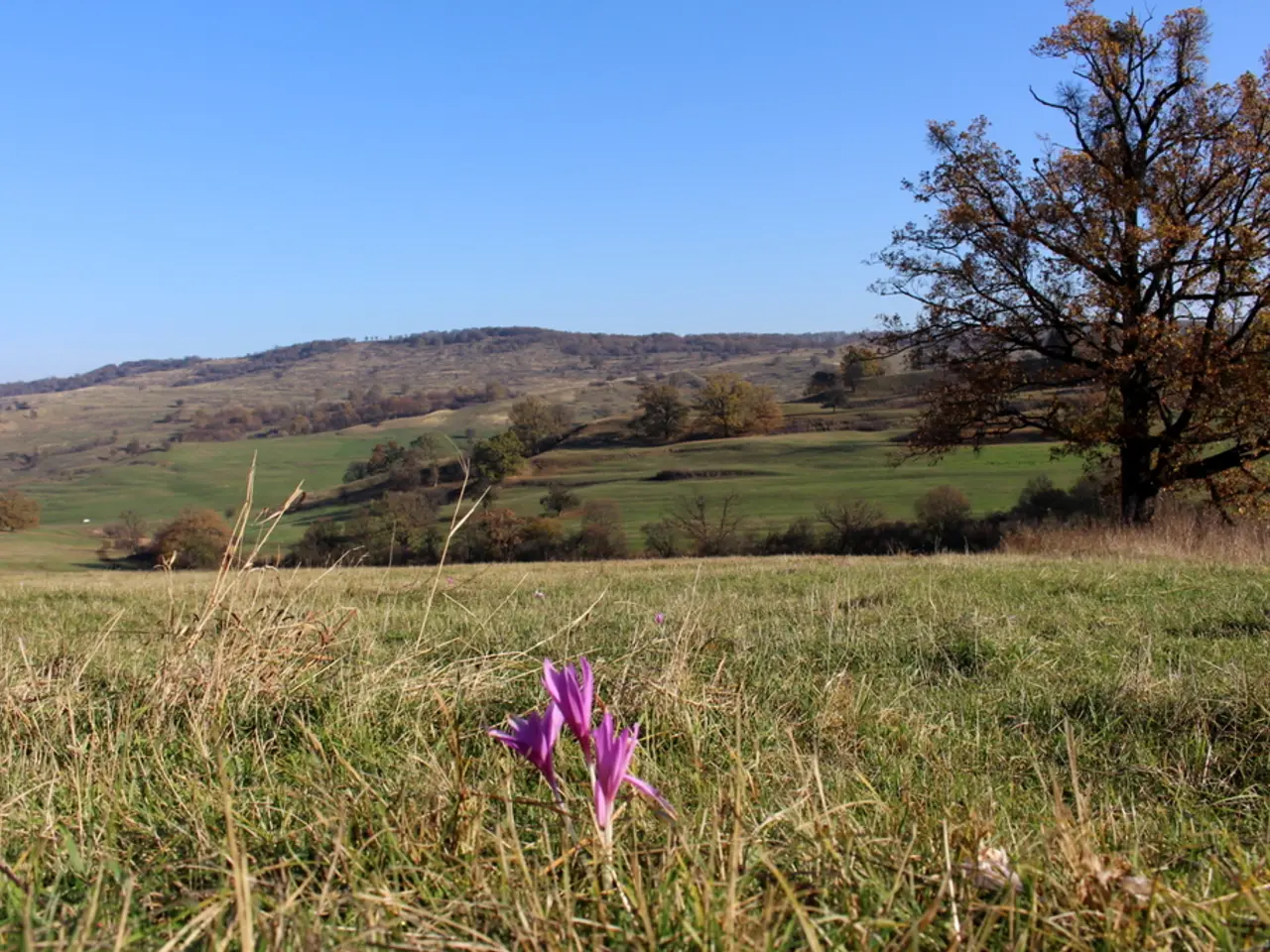Top 10 Perennials Thriving After Autumn Sowing
In the twilight of the year, as the leaves begin to change and the days grow shorter, gardeners across the land are preparing for a unique opportunity – fall planting. This practice, which dates back centuries, offers several benefits that make it an ideal time to bring new life to your garden.
One of the key advantages of fall planting is **root establishment**. The cooler soil allows roots to develop and strengthen while the plant remains dormant or less active above ground. This phase of growth sets the plants up for a strong start when spring arrives.
Fall also boasts **moderate temperatures and consistent rainfall**, which reduce stress on newly planted perennials. The cooler temperatures and efficient water absorption help the plants establish themselves without the heat stress of summer.
With less competition from weeds, perennials planted in the fall face fewer challenges as they establish their roots. The slowing growth of weeds in the fall means fewer nutrients and water are being diverted away from your new additions.
By the time spring rolls around, these fall-planted perennials have a robust root system ready to support vigorous top growth and blooming. This is especially true for perennials that bloom in the fall, such as autumn sage, hardy chrysanthemums, and smooth asters, which add a burst of colour when many summer flowers are fading.
Certain perennials, like Russian sage, are drought-tolerant and require minimal summer care once established from fall planting. They also provide ecological benefits, such as attracting pollinators.
Some popular perennials to plant in the fall include Russian sage, hardy chrysanthemum, smooth aster, narrowleaf sunflower, autumn sage, rose verbena, red spider lily, salvia (especially in USDA zones 7 and warmer), dusty Miller, nemesia, hydrangea, balloon flower, and Schubertii allium.
When it comes to specific plants, Schubertii Allium should be planted in early to mid-fall for optimal growth. These plants have large, spherical flower heads composed of tiny star-shaped blossoms. They thrive in well-drained soil and prefer a sunny location.
Parrot Tulips, known for their vibrant, fringed petals in colours such as red, yellow, and orange, should be planted in mid to late fall. Plant them in well-drained soil in a sunny location and water them well after planting. A layer of mulch can also be added to protect them from extreme cold.
Black-Eyed Susans, which bloom from mid-summer to fall and attract butterflies, should be planted in early to mid-fall. They prefer slightly alkaline soil and full sun exposure. Avoid high-nitrogen fertilizers when planting Black-Eyed Susans, and consider adding a slow-release, balanced fertilizer during planting to support their growth.
Crown Imperials, with tall stems topped with clusters of bell-shaped flowers in shades of red, orange, and yellow, should be planted in the fall for ample time to establish their roots before winter. Ensure the bulbs used are large and firm to the touch.
Mulching around the base of Russian Sage helps retain soil moisture and protect the roots. This plant also prefers slightly alkaline soil and full sun exposure.
In summary, fall planting optimizes root development in ideal soil conditions, minimizes plant stress, and prepares perennials to thrive and bloom in the following growing season, often with spectacular autumn colour benefits. So, as the leaves begin to fall and the nights grow chillier, consider taking advantage of this unique opportunity to bring new life to your garden.
- For an efficient root development phase, gardeners often choose to plant perennials during the fall, when the cooler soil allows roots to establish and strengthen while the plant remains dormant.
- Gardening enthusiasts looking to add a burst of color to their home-and-garden lifestyle may find planting autumn sage, hardy chrysanthemums, and smooth asters in the fall an ideal solution, as these perennials thrive and bloom during this time, providing vibrant flowers when many summer flowers are fading.




